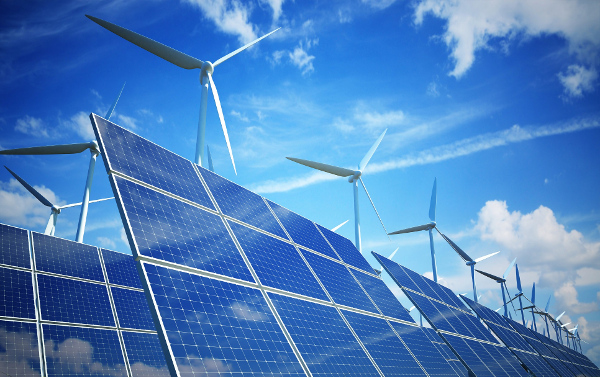NEW DELHI : The Indian government is pulling out all the stops to achieve renewable energy (RE) capacity of 150 gigawatts (GW) by 2 October, said two people aware of the development, seeking anonymity.
As part of the efforts, 2.2 GW is to be commissioned by Gandhi Jayanti and another 2.32 GW by 31 October. The initiative comes in the run up to the 2021 UN Climate Change Conference, COP-26, to start in Glasgow on 31 October.
India‘s installed renewable energy capacity is 147.05 GW, including hydropower projects of 46.37 GW. The country has installed solar and wind energy capacity of 100.68 GW.
“Of the 2.95 GW to be commissioned within this time period to reach 150 GW, 410 megawatts has been reached, leaving 2.54 GW to be commissioned,” said one of the two people mentioned above.
“Projects have been identified for achieving this 150 GW renewable energy capacity by 2 October. Also, suggestions have been sought from developers for projects that can be commissioned by 2 October and 31 October,” said the second person.
India, the biggest emitter of greenhouse gases after the US and China, plans to reduce its carbon footprint by 33-35% of its 2005 levels by 2030, as part of its commitment to the UN Framework Convention on Climate Change adopted by 195 countries in Paris in 2015.
The country has also committed to have 40% of its total installed power generation capacity from renewables by 2030.
India has reached 38.5% of its installed power capacity from non-fossil fuels and this will go up to 66% by 2030, according to the government. The country has also reduced its emissions by 28%.
Queries emailed to the spokesperson of the ministry of power and new and renewable energy on Friday morning were not answered till press time.
India is running what will become the world’s largest clean energy programme of achieving 175 GW of clean energy capacity by 2022 as part of its global climate change commitments. The country’s electricity demand has also been on an upward trajectory following the dip during the second wave of the covid-19 pandemic.
Union power and new and renewable energy minister Raj Kumar Singh on Thursday said India’s demand for electricity is growing, which denotes a healthy growth of the economy. India’s electricity demand was 124 billion units in August, compared to 106 billion units recorded in the corresponding month of 2019 before the covid-19 pandemic led to a drastic reduction in power demand. India’s peak electricity demand reached an all-time high of 200.57 GW on 7 July, reflecting the revival of economic activity.
Singh has been vocal about urging the group of 20 nations (G-20) having per capita greenhouse gas (GHG) emissions above the global average to bring it down to the world average, thereby vacating some carbon space for developing nations. The developed world occupies about 67-75% of the total carbon space.
India is the only major economy with actions in line to keep global warming below 2°C of pre-industrial levels, according to Singh. The minister has also called out nations on their carbon neutral intent announcements with India’s per capita emissions being just about one-third of the global average.
He has also termed the announcements on carbon neutrality by some countries as “meaningless”.
Source:LiveMint
You may also like
-
Dot Simplifies Approval Processes For Telecom Licenses And Wireless Equipment
-
PM to Inaugurate SEMICON India 2024 on 11th September
-
Shri Piyush Goyal Sets 500 Million Tonnes Domestic Steel Production Target by 2034
-
NHAI to Track Around 100 Toll Plazas with GIS-Based Software for Seamless Movement of Traffic at National Highways
-
“Marching Towards Building A Digitally Connected Bharat and An Atmanirbhar Telecom Sector”: Union Minister Jyotiraditya Scindia
